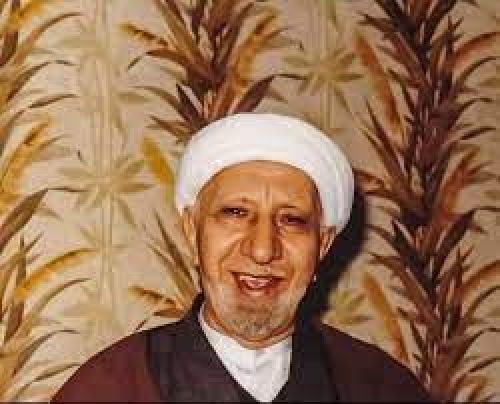One of the properties of gases is that they mix with each other. When they do so, they become a solution—a homogeneous mixture. Some of the properties of gas mixtures are easy to determine if we know the composition of the gases in the mix.
In gas mixtures, each component in the gas phase can be treated separately. Each component of the mixture shares the same temperature and volume. (Remember that gases expand to fill the volume of their container; gases in a mixture do that as well.) However, each gas has its own pressure. The partial pressure of a gas, Pi, is the pressure that an individual gas in a mixture has. Partial pressures are expressed in torr, millimeters of mercury, or atmospheres like any other gas pressure; however, we use the term pressure when talking about pure gases and the term partial pressure when we are talking about the individual gas components in a mixture.
Dalton’s law of partial pressures states that the total pressure of a gas mixture, Ptot, is equal to the sum of the partial pressures of the components, Pi:

Although this may seem to be a trivial law, it reinforces the idea that gases behave independently of each other.
Example 15
A mixture of H2 at 2.33 atm and N2 at 0.77 atm is in a container. What is the total pressure in the container?
Solution
Dalton’s law of partial pressures states that the total pressure is equal to the sum of the partial pressures. We simply add the two pressures together:
Ptot = 2.33 atm + 0.77 atm = 3.10 atm
Test Yourself
Air can be thought of as a mixture of N2 and O2. In 760 torr of air, the partial pressure of N2 is 608 torr. What is the partial pressure of O2?
Answer
152 torr
Example 16
A 2.00 L container with 2.50 atm of H2 is connected to a 5.00 L container with 1.90 atm of O2 inside. The containers are opened, and the gases mix. What is the final pressure inside the containers?
Solution
Because gases act independently of each other, we can determine the resulting final pressures using Boyle’s law and then add the two resulting pressures together to get the final pressure. The total final volume is 2.00 L + 5.00 L = 7.00 L. First, we use Boyle’s law to determine the final pressure of H2:
(2.50 atm)(2.00 L) = P2(7.00 L)
Solving for P2, we get
P2 = 0.714 atm = partial pressure of H2
Now we do that same thing for the O2:
(1.90 atm)(5.00 L) = P2(7.00 L)
P2 = 1.36 atm = partial pressure of O2
The total pressure is the sum of the two resulting partial pressures:
Ptot = 0.714 atm + 1.36 atm = 2.07 atm
Test Yourself
If 0.75 atm of He in a 2.00 L container is connected to a 3.00 L container with 0.35 atm of Ne and the connection between the containers is opened, what is the resulting total pressure?
Answer
0.51 atm
One of the reasons we have to deal with Dalton’s law of partial pressures is that gases are frequently collected by bubbling through water.
This partial pressure is called a vapour pressure. Table 1.1 “Vapor Pressure of Water versus Temperature” lists the vapour pressures of H2O versus temperature. Note that if a substance is normally a gas under a given set of conditions, the term partial pressure is used; the term vapour pressure is reserved for the partial pressure of a vapour when the liquid is the normal phase under a given set of conditions.
Table 1.1 Vapor Pressure of Water versus Temperature
| Temperature (°C) | Vapor Pressure (torr) | Temperature (°C) | Vapor Pressure (torr) | |
|---|---|---|---|---|
| 5 | 6.54 | 30 | 31.84 | |
| 10 | 9.21 | 35 | 42.20 | |
| 15 | 12.79 | 40 | 55.36 | |
| 20 | 17.54 | 50 | 92.59 | |
| 21 | 18.66 | 60 | 149.5 | |
| 22 | 19.84 | 70 | 233.8 | |
| 23 | 21.08 | 80 | 355.3 | |
| 24 | 22.39 | 90 | 525.9 | |
| 25 | 23.77 | 100 | 760.0 |
Any time a gas is collected over water, the total pressure is equal to the partial pressure of the gas plus the vapour pressure of water. This means that the amount of gas collected will be less than the total pressure suggests.
Example 17
Hydrogen gas is generated by the reaction of nitric acid and elemental iron. The gas is collected in an inverted 2.00 L container immersed in a pool of water at 22°C. At the end of the collection, the partial pressure inside the container is 733 torr. How many moles of H2 gas were generated?
Solution
We need to take into account that the total pressure includes the vapour pressure of water. According to Table 1.1 “Vapor Pressure of Water versus Temperature,” the vapour pressure of water at 22°C is 19.84 torr. According to Dalton’s law of partial pressures, the total pressure equals the sum of the pressures of the individual gases, so
733 torr = PH2 + PH2O = PH2 + 19.84 torr
We solve by subtracting:
PH2 = 713 torr
Now we can use the ideal gas law to determine the number of moles (remembering to convert the temperature to kelvins, making it 295 K):

All the units cancel except for mol, which is what we are looking for. So
n = 0.0775 mol H2 collected
Test Yourself
CO2, generated by the decomposition of CaCO3, is collected in a 3.50 L container over water. If the temperature is 50°C and the total pressure inside the container is 833 torr, how many moles of CO2 were generated?
Answer
0.129 mol
Finally, we introduce a new unit that can be useful, especially for gases. The mole fraction, χi, is the ratio of the number of moles of component i in a mixture divided by the total number of moles in the sample:

(χ is the lowercase Greek letter chi.) Note that mole fraction is not a percentage; its values range from 0 to 1. For example, consider the combination of 4.00 g of He and 5.0 g of Ne. Converting both to moles, we get

The total number of moles is the sum of the two mole amounts:
total moles = 1.00 mol + 0.025 mol = 1.25 mol
The mole fractions are simply the ratio of each mole amount to the total number of moles, 1.25 mol:

The sum of the mole fractions equals exactly 1.
For gases, there is another way to determine the mole fraction. When gases have the same volume and temperature (as they would in a mixture of gases), the number of moles is proportional to partial pressure, so the mole fractions for a gas mixture can be determined by taking the ratio of partial pressure to total pressure:

This expression allows us to determine mole fractions without calculating the moles of each component directly.
Example 18
A container has a mixture of He at 0.80 atm and Ne at 0.60 atm. What is the mole fraction of each component?
Solution
According to Dalton’s law, the total pressure is the sum of the partial pressures:
Ptot = 0.80 atm + 0.60 atm = 1.40 atm
The mole fractions are the ratios of the partial pressure of each component to the total pressure:

Again, the sum of the mole fractions is exactly 1.
Test Yourself
What are the mole fractions when 0.65 atm of O2 and 1.30 atm of N2 are mixed in a container?
Answer
χO2=0.33; χN2=0.67













 إستعراض موجز لحياة السيدة زينب الكبرى
إستعراض موجز لحياة السيدة زينب الكبرى أم البنين .. صانعة الوفاء وراعية الفضيلة
أم البنين .. صانعة الوفاء وراعية الفضيلة هل كان الشيخ الوائلي يعلم؟!
هل كان الشيخ الوائلي يعلم؟!

















